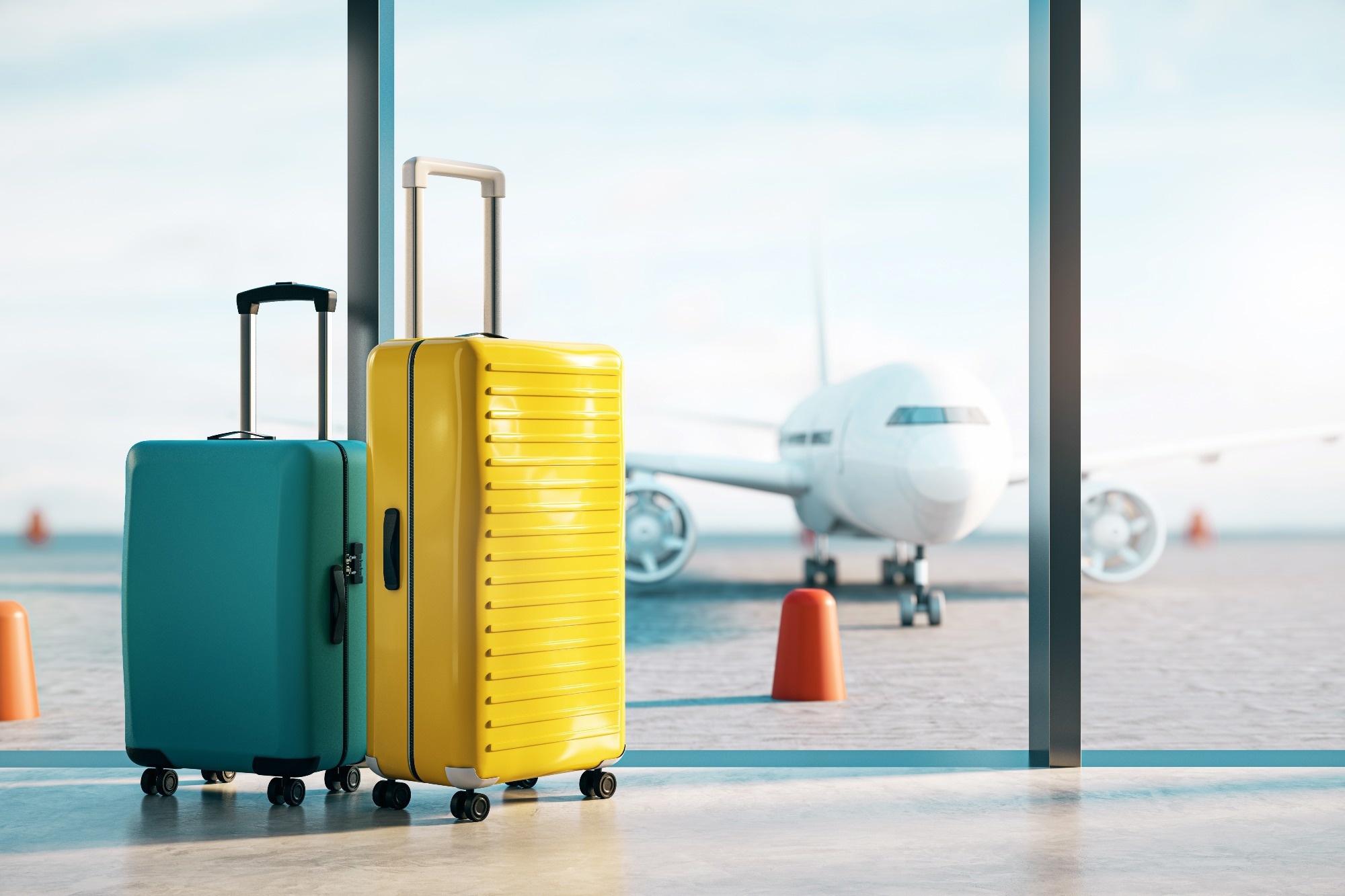Airport or luggage malaria, also known as Odyssean malaria, occurs when people in non-endemic areas are infected by mosquitoes carrying the Plasmodium parasite. These mosquitoes are transported from malaria-endemic regions via luggage or airplanes. Because cases like this are rare, the clinical, epidemiological, and biological aspects of Odyssean malaria are not yet well understood.
In a recent study published in Eurosurveillance, researchers systematically reviewed past studies and new data from public health institutes to better understand these rare cases of airport and luggage malaria in Europe.
 Study: Airport and luggage (Odyssean) malaria in Europe: a systematic review. Image Credit: Who is Danny/Shutterstock.com
Study: Airport and luggage (Odyssean) malaria in Europe: a systematic review. Image Credit: Who is Danny/Shutterstock.com
Background
Since the eradication of malaria from Western Europe in the 1970s, most of the cases of malaria that have occurred in the European Union/European Economic Area (EU/EEA) have been among travelers who have returned from malaria-endemic regions. Close to 99% of the 6000 or so cases of malaria in 2022 that were reported from the EU/EEA were travel-related.
However, a few rare cases of airport and luggage malaria, where mosquitoes carrying the Plasmodium parasite are transported to the airport through aircraft or luggage and infect people in and around the airport, have been known to occur.
While a 1989 review highlighted the sporadic nature of Odyssean malaria, infrequent reporting of these rare cases and a dearth of centralized data have made it difficult to understand the epidemiological and clinical aspects of such cases.
About the Study
In the present study, the researchers conducted a systematic review of past cases of Odyssean malaria and gathered new data from reports from public health institutes to better and update their understanding of Odyssean malaria in Europe. They also examined the flight volumes and patterns between EU/EEA and regions where malaria is endemic to support their findings.
The study employed a comprehensive literature search strategy, using terminology related to malaria, airports, aircraft, and luggage. The publication date and language were not restricted.
Two independent reviewers screened the studies to select those in which airport and luggage malaria cases were confirmed using lab methods. They excluded studies that were outside the study region of the EU/EEA or were not related to Odyssean malaria.
The researchers then extracted a wide range of data from the studies, including demographic information such as gender, age, and occupation of the infected individuals, and clinical details such as symptoms, symptom onset date, outcomes, and the diagnostic methods used to confirm the Plasmodium species.
Additionally, data related to the type of malaria (luggage or airport), infection location (near luggage or the airport), and suspected routes of transmission, such as mosquito transport through luggage or the aircraft, were also noted.
The researchers also obtained temporal and geographical information, including proximity to an international airport, the distance between the airport and the infection site, and the timeframe of the infection.
Any links between recent cases of airport or luggage malaria and recent air travel and flight patterns were also explored, including details on flights from malaria-endemic regions. Additional data were obtained from public health authorities, who were also asked to verify the data on existing cases.
Major Findings
The study reported that while airport and luggage malaria cases are relatively rare, they continue to occur and the number of reports has increased noticeably in the last five years, despite lower flight volumes due to the coronavirus disease 2019 (COVID-19) pandemic.
Of the 145 identified cases, 105 cases were of airport malaria, while another 32 were luggage malaria, and eight remained undifferentiated. Most of the cases were reported from Western Europe, with Charles de Gaulle Airport in Paris being a frequent location.
The results suggested that airport malaria was a seasonal occurrence, with most of the cases occurring in the summer months, while luggage malaria occurred throughout the year, albeit sporadically. Furthermore, men seemed more likely to get infected, and while most patients recovered, the fatality rate was 6.8%, with a higher risk of mortality among older individuals.
Plasmodium falciparum was the malarial parasite most frequently detected, and other species, such as P. vivax, P. ovale, and P. malariae, were rarely detected. Microscopic methods were the most used diagnostic tools, and co-infections were not very frequent.
Furthermore, for the cases for which epidemiological links could be traced, the exposure was found to be from airports or occupational settings such as luggage and cargo handling.
Most cases were classified as airport malaria after travel-related infections were ruled out, and in a large percentage of the cases, travel history to malaria-endemic regions was ruled out.
Conclusions
Overall, the study found that although the incidence of airport and luggage malaria remains relatively rare, the recent increase in the number of cases in Europe, despite the decrease in flight volumes during the pandemic, highlighted the need for improved surveillance of aircraft and luggage for vector-borne diseases such as malaria.
Journal reference:
-
Hallmaier-Wacker, L. K., Eick, van, Briët, O., Delamare, H., Falkenhorst, G., Houzé, S., Noël, H., Rebolledo, J., Bortel, V., & Gossner, C. M. (2024). Airport and luggage (Odyssean) malaria in Europe: a systematic review. Eurosurveillance, 29, 41. doi:10.2807/1560-7917.ES.2024.29.41.2400237, https://www.eurosurveillance.org/content/10.2807/1560-7917.ES.2024.29.41.2400237